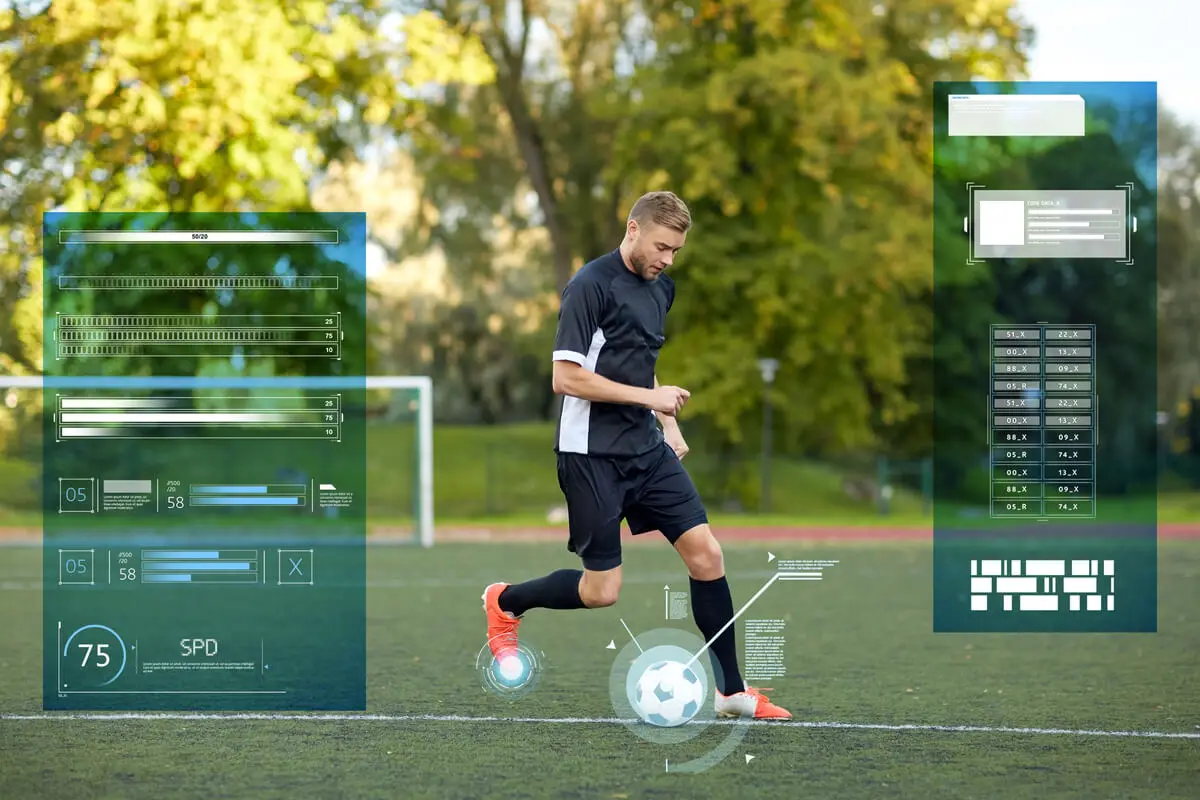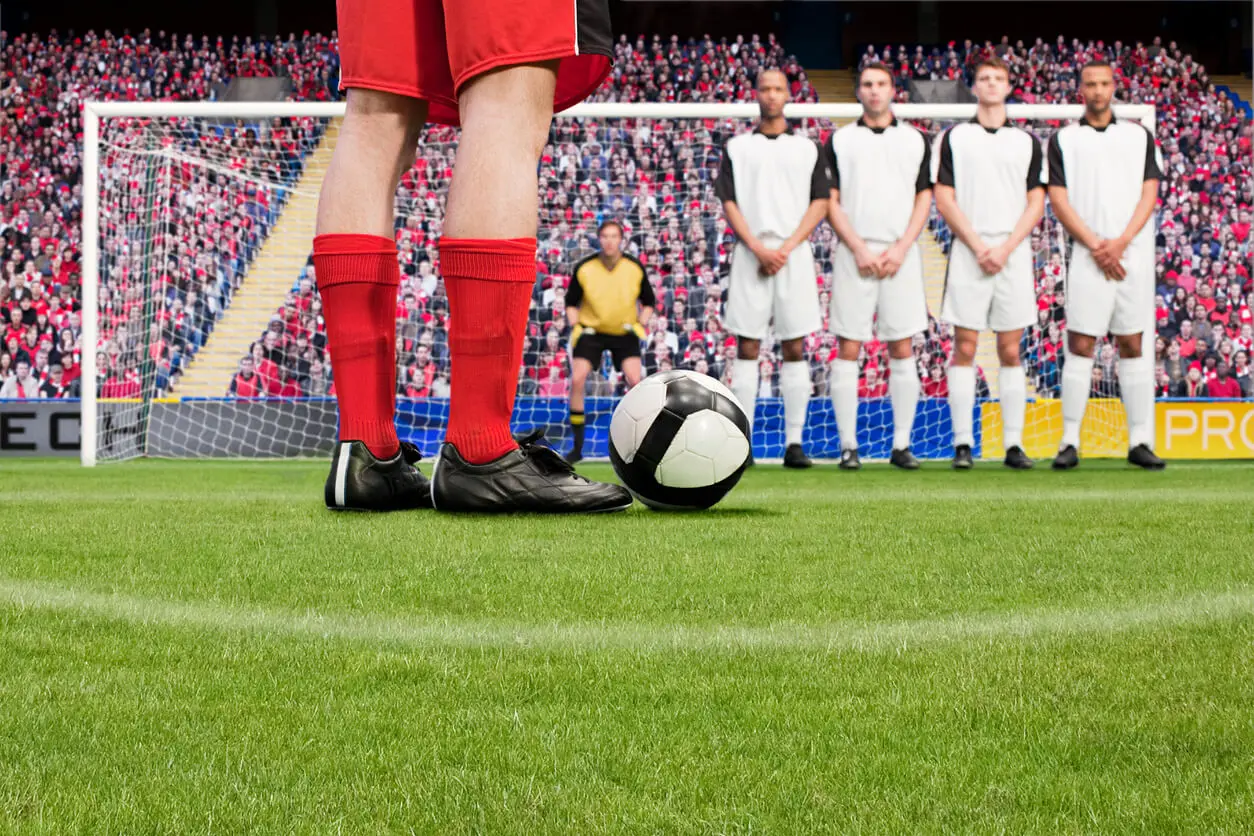Real Madrid's Robotic Wall for Free Kicks


Written and verified by the doctor Leonardo Biolatto
Soccer is always something to talk about, both in terms of sports and technological innovations that are applied in matches and training sessions. A few months ago, Real Madrid went viral for its robotic wall for free kicks.
Yes, you read that right! A line of robots, automated, form part of a wall powered by artificial intelligence in order for players to practice their shots on goal. They are even programmed to jump and moved around, just like a real soccer match!
Is it useful? There’s no doubt that Real Madrid gets results on the pitch and part of that depends on the use of new technology in different areas to help them improve. So, don’t go away! Let’s see how it works and how it could have an effect in the actual match.
How does Real Madrid’s robotic wall for free kicks work?
It seems that Real Madrid are not the pioneers in the use of these robots. Olympique Lyon had already implemented them before, but the Spanish team had made them go viral.
As it turned out, this group of 5 robots connected to each other forms a wall with the ability to “jump”. When the player kicks, the artificial opponents move, simulating what happens in real life.
Up to this point, maybe that’s not too innovative. But it turns out there’s more. These robots are loaded with artificial intelligence software that has a database of clubs around the world.
If Real Madrid wants the free-kick barrier to simulate the defense of Barcelona FC, it can do so. Just set up the artificial intelligence. The same for PSG or any other team.
Discover more here: How is Artificial Intelligence Used in Professional Soccer?
Artificial intelligence learning
Artificial intelligence that learns from databases is increasingly present in all areas of everyday life. It’s used in web browsing, social networks, hospitals, and even traffic control.
In very simple terms, the technology consists of an analysis of large volumes of data in a short time to develop new algorithms, forecasts, probabilities, and automated responses. Handling information in such quantities would be impossible for a human brain.
If we focus on the case of Real Madrid and its robotic wall for free kicks, we realize that the process is similar. The program managers upload data on movements, tendencies, and how players act and react from all over the world. Different matches are analyzed and the artificial intelligence responds, moving the robots in the same way that real players would move.
There is always a margin of error in this software. The algorithms calculate probabilities, but, as such, the odds are not 100% accurate.
Anyway, it makes sense for training sessions. Matches will have their particular factors and the randomness of human decisions. However, what’s important here is that this system incorporates moves that statistics show that the opponents make relatively often.

The science of free kicks in soccer
A study published in 2021 in Plos One analyzed the effect of the barrier on the reactivity and ball-stopping ability of goalkeepers. Contrary to what might be thought at first, it seems that this soccer habit isn’t so effective.
Using virtual reality, the researchers tested the efficiency of 25 goalkeepers (10 of them professionals) in stopping balls thrown according to trajectories copied from the great shooters of world soccer. Among them, Bale and Beckham.
According to the results, the free-kick wall blocks the goalkeeper’s vision for 200 milliseconds. Therefore, compared to the situation without the wall, the goalkeeper moves 90 milliseconds after the same shot.
Translated into statistical terms, this represents a 13% less chance of saving the ball when the free kick wall is present. Basically, there are more goals with the wall than without it.
Vision is key to saving the ball. Interrupting the goalkeeper’s field of vision wouldn’t be as beneficial, even if the strategy also reduces the space for the kicker. In short, it seems that the defending team is at a greater disadvantage.
Learn all about: 4 Training Injuries that Affected the Qatar 2022 World Cup Teams
The perfect angle to overcome the barrier
Continuing with the science of free kicks, mathematics provides a lot of calculations to understand how a shot can go through the wall and score a goal. According to the various data available, the kicker should have an angle of departure of 13 degrees. No more and no less.
A greater degree would not allow the ball to descend after overcoming the 9 to 10 meters between the starting point and the wall. On the contrary, a lower degree would have a high chance of hitting the body of the opposing players.
Real Madrid’s robotic wall for free kicks doesn’t generate a magic 13-degree angle for kickers. But it is a way to train the foot in order to achieve close to that.

Real Madrid, always at the forefront
Real Madrid’s robotic wall for free kicks is further evidence of the Spanish club’s avant-garde technology. The club always seems to be in the news because of the methods it implements in its physical preparations.
Artificial intelligence, data analysis, power implements, scientific routines… to be at the top of the world in soccer, there’s no other way than to constantly update.
All cited sources were thoroughly reviewed by our team to ensure their quality, reliability, currency, and validity. The bibliography of this article was considered reliable and of academic or scientific accuracy.
- Valkanidis, T. C., Craig, C. M., Cummins, A., & Dessing, J. C. (2020). A goalkeeper’s performance in stopping free kicks reduces when the defensive wall blocks their initial view of the ball. PloS one, 15(12), e0243287.
- Aggarwal, Karan, et al. “Has the Future Started? The Current Growth of Artificial Intelligence, Machine Learning, and Deep Learning.” Iraqi Journal for Computer Science and Mathematics 3.1 (2022): 115-123.
This text is provided for informational purposes only and does not replace consultation with a professional. If in doubt, consult your specialist.








